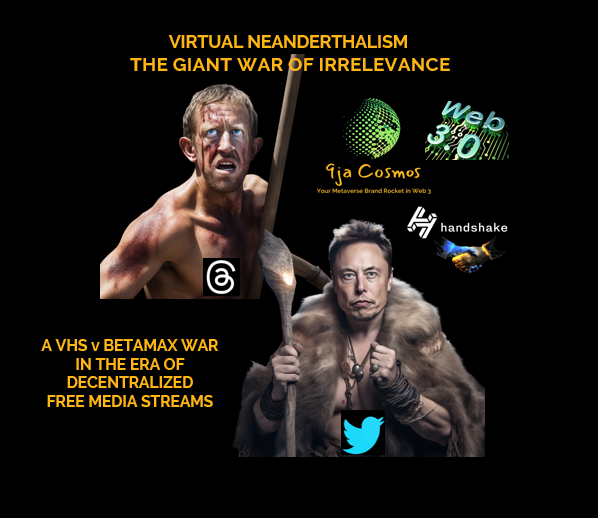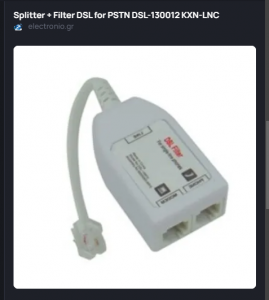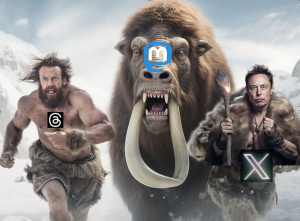
So.. ok.. I’m here, and I start seeing this stuff about Zuck starting a Twitter. Guy even has the audacity to use the ‘@’ sign (which Twitter actually coined as the character to use for tagging), and make it into a rectangle shape to represent their logo. Meanwhile, the birdie is gone and X marks the spot!
Yeah ok… all good.
The question that has to be asked though, is why is this actually ‘news’.
Register for Tekedia Mini-MBA edition 19 (Feb 9 – May 2, 2026): big discounts for early bird.
Tekedia AI in Business Masterclass opens registrations.
Join Tekedia Capital Syndicate and co-invest in great global startups.
Register for Tekedia AI Lab: From Technical Design to Deployment (next edition begins Jan 24 2026).
Big Drama, with Zuck announcing 10 million new subscribers in the last ‘x’ amount of hours, but maybe y’all confused which league y’all playing in.
Scroll back to the ending of last year, and the events of the takeover of Twitter by Musk.
I have to say a lot of people have a fairly shallow memory about this. Many have the view that Musk tried to change things that were not broken.
That’s generally an isolationist user perception. Just because the UX seemed great to majority of users, doesn’t mean the basics of a business was working. That’s something with a capital ‘V’ – VIABILITY. Twitter was losing money – and big time.
Musk is a ‘tinkerer’ an experimenter. He is experimenting with a path to viability. But just understand that if Musk didn’t buy it, the Twitter you used to know would be dead already. It had already passed a point of no return on sustainability. Twitter pre-Musk was no longer an option; it is either a ‘Muskified Twitter’ or no Twitter.
It’s limping still, and it might have undergone some genetic modification, but it is still alive. Twitter ‘die hards’ can thank Musk for that.
But what everyone is not understanding, is that this space is no longer about a few legacy technology behemoths.
This goes back to a discussion I have had many times… that ‘Web 2’ – something that Twitter, Meta and a few others like are purportedly part of – never really existed.
Was there ever really an evolution between the original web and the next iteration of it?
Well, that depends on your perspective. The first iteration, some would argue, were proprietary rather than open-source networks, carrying data to various ‘nodes’ or user stations within a network. They started out with simple collaboration tools, and operated over network cables to computers in the same building, or over standard (PSTN) phone lines to computers somewhere else.
The first intranet was created by the US Department of Defence Advanced Research Projects Agency (ARPANET) in the 1960s
Modern intranets may have search engines, user profiles, blogs, mobile apps with notifications, events planning and PM tools within their infrastructure. They may also have permission access structures that allow customers and partnering contractors to access certain aspects of their networks such as CRM and ERP services, over an ordinary internet connection.
Open internets didn’t come until the 1990s, so whether an ‘Intranet’ can be called Web1 and ‘The Internet’ be called Web 2 is a fair question.
The next innovation came in the second half of the 1990’s. This was a big change which separated the frequency of the internet connection on a PSTN (fixed) line, long before mobile communications were common.
This meant that with a small device called a ‘splitter’, for the first time, people could use the internet over the same fixed line, and still have their phone line open to calls.

This led to the acceleration of internet speeds, and with that, newer technologies such as DSL and ADSL.
Going into the 2k’s, on the API development side we had developments like SAX and TrAX, which I used academically at the time.
Other advances followed at the transport layer, such as MPLS and SDWAN (Software Defined Wide Area Networks), which in turn supported ‘cloud’ architectures.
Social Media grew in complexity over the period, fuelled by faster and higher capacity internet services and data transport networks, and an ever collapsing cost and higher capacity of storage and data centre networks. Hardware system memory (RAM), processor, and graphics rendering speeds continued to increase in capability while falling in price.
By 2k, ‘Portal’ systems like AOL, MSN, and Yahoo were adding voice, but had yet to accommodate video.
Eventually, a tipping point was reached where large multi-media corporations such as Google, Meta, Amazon, Microsoft, X, Apple, and others, were able to develop ‘silos’ built within the constantly evolving state of web.
They don’t represent a collective evolution of web in themselves.
The first Social Media recognised as such was Six Degrees in 1997.
‘Web’ since the advent of open internet (post INTRANET), seems to have been an evolution continuum, with users (including corporate users such as Google or Meta), incrementally tweaking how they use it and monetize it.
Google, for example, ‘rents’ ‘google.com’ from Verisign under the auspices of ICANN, a central authority that has existed since 1985!
AT&T, Deutch Telekom, TATA Communications and NTT Japan are still examples of Tier 1 (Internet Mirrors), while Fibre Optic Cable and Satellites still remain the only physical layer that enable cross continent data to move.
All the way back to the 1990s, the Blockchain is the single new technology that has moved the needle.
The nonsense about a Web 2 that never existed, being retrospectively created, started around 2020 when new blockchain products were being created without a decentralized access path.
Blockchain product marketers wanted to find a plausible way to present their products as ‘Web 3’ and cash in, without making the harder, and less lucrative task of decentralized access happen.
On March 15, 1985, the first dot-com (ICANN) domain, symbolics.com, was registered by Symbolics, a Massachusetts-based computer company. Today, OpenSea operates off opensea.io, an ICANN domain. Same centralized domain authority system! And Google? Well, just another internet user!

Back to Musk and Zuckerberg, and Ndubuisi Ekekwe of Tekedia Institute has serially reported on the various twists since wars of words erupted in online media between the pair,
Ever since Musk first expressed interest in X, (formerly Twitter) the future of the platform has been marred with problems and controversy.
Twitter had been in deep financial trouble and would have been dead in the water by November 2022 if nobody had stepped in.
Elon changed his mind about buying Twitter, but got sued by the management, and was issued with a court directive to go ahead with the purchase.
Last year, I related how in November, so many people jumped from Twitter to a new decentralized platform with comparable features in the confusion that the sign-up volume almost crashed their servers.
That platform is Mastodon.

Musk has hit back at the development of DAO, data democracy, and data self-sovereignty based platform communities by introducing a user earning feature called ‘xcreate’ and a multi-value instrument trading platform in partnership with eToro.
Zuckerbergs’ new ‘Threads’ has not been without its’ problems. Prof Ekekwe reported that the dramatic early adoption was for the large part, not users new to Meta. There was a predominance of Instagram users.
Ekekwe explained that the revenue dynamic meant if Threads uptake was at a detriment to time spent on Instagram, this translates to overall losses for Meta.
Threads has now seen a significant retention problem. Does this collapse mean former Instagram users have simply gone back there, or does it mean they have been lost to Meta altogether? If it is the latter, then it means more blood loss for Meta.
But Meta has brought a new weapon to the table – A commitment to integrate with the same open protocols used by other distributed social media alternatives, such as Mastodon. This is the ‘pet’ strategy of Instagram CEO Adam Mosseri.
It’s intended to give users the option to migrate their accounts, along with all their follower data intact, to a rival like Mastodon that isn’t controlled by Meta.
While that interoperability isn’t available yet, Mosseri has repeatedly highlighted it as a priority on his to-do list.
When and if it happens, that could be a significant step. What may appear now as an audience grab by Meta could someday wind up being how millions of people were onboarded to a massive, decentralized social networking infrastructure that is not controlled by any single company, individual or organization.
“This is why we think interoperability requirements are so important,” said Charlotte Slaiman, a competition expert at the Washington-based consumer group Public Knowledge. If users could port their entire social graph from one rival to another whenever they wanted, she said, “we could have more fair competition based on the quality of the product, not just incumbency advantage.”
With both X and Meta taking the issue of platforms offering data sovereignty so seriously, perhaps more users should start thinking ahead, and invest some time in being earlier adopters on a few of these platforms.
After all, they have ruffled some feathers so much, X marks the spot where the bird died!
It is time for us to move on, and time for old things to move over!
9ja Cosmos is here…
Get your .9jacom and .9javerse Web 3 domains for $2 at:
Visit 9ja Cosmos
Follow us on LinkedIn HERE
All reference sites accessed 21-23/08/2023
techspot.com/article/2484-yahoo-messenger/
create.twitter.com/en/goals/monetization
en.wikipedia.org//wiki/Tier_1_network
cnbc.com/2023/04/13/twitter-to-let-users-access-stocks-crypto-via-etoro-in-finance-push.html
edition.cnn.com/2023/07/07/tech/meta-social-media-dominance-threads/index.html
theneweuropean.co.uk/the-slow-sad-death-of-twitter/
stackoverflow.com/questions/72586417/validating-xml-with-relaxng-and-sax
fortinet.com/resources/cyberglossary/sd-wan-architecture



